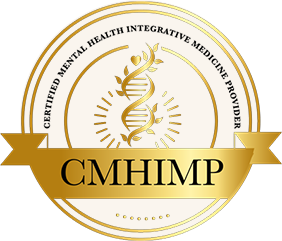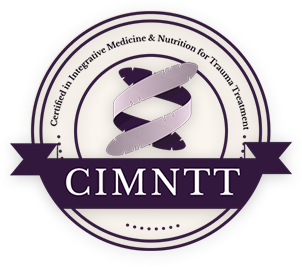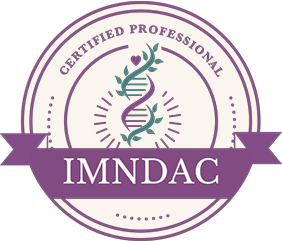Certification
Assessing the Adverse Effects of Meditation: Personalizing Your Approach
Although meditation and mindfulness-based interventions are widely used, research shows they can also lead to adverse effects, particularly among those with trauma histories or subclinical PTSD. These findings underscore the need for careful screening, harm monitoring, and trauma-informed program design.

I was fortunate to be introduced to meditation practice in my teens, and since then, I have studied and practiced numerous methods for my personal well-being, along with the potential to illuminate the best methods for my clients.
Bioindividuality has always been the foundation of my practice—there is no one-size-fits-all approach to health, and meditation is no exception. A practice that once had to be kept “in the closet,” when practitioners risked stigma for acknowledging their use of meditation with their clients, has now become a trusted and mainstream tool for healing. Today, meditation is recognized for easing physical pain and the emotional aftermath of trauma, yet it is not without risks.
For some, the practice can bring discomfort, distress, or adverse effects. This is why individualized, trauma-sensitive approaches remain essential to ensure that meditation supports, rather than disrupts, well-being.
In my courses, I teach about the stage-based approach to interventions, including yoga meditation and exercise. The stage of recovery is an important factor that helps to define which intervention might be best.
Research is continuing to highlight these concerns, providing a more balanced view of meditation in the healing process. The evidence shows that while many people benefit, others—particularly those with trauma histories or greater physiological sensitivity—may be at risk of adverse effects. Let’s review five recent studies that illustrate this complexity.
In the first study, researchers observed university students new to meditation and yoga as they practiced Samadhi meditation. While most adjusted without difficulty, a smaller group experienced nausea tied to shifts in their autonomic nervous system, especially increased sympathetic activity. This suggests that sudden physiological changes during meditation may provoke adverse reactions in susceptible individuals, pointing to the need for further investigation into the biological drivers of these effects.
The second study focused on people with active depression and histories of childhood trauma. Across two mindfulness-based program trials, researchers found that trauma and subclinical PTSD symptoms predicted both worse treatment outcomes and a greater likelihood of meditation-related adverse effects. In some cases, trauma also contributed to attrition. These results highlight the importance of trauma-sensitive modifications and careful screening in meditation programs designed for clinical populations.
The third article presented a systematic review of 83 studies on meditation-related adverse events. The authors found that approximately 8% of practitioners experienced negative effects, with rates varying depending on study design. Reports most often described anxiety, depression, and problems with thinking or focus. Less common were gastrointestinal complaints or, in rare cases, suicidal thoughts. What is striking is that these effects sometimes appeared even in people with no previous mental health history, which makes it important to talk about meditation in a balanced way, with both its positive and negative outcomes.
The fourth study introduced a structured tool—the Meditation Experiences Interview (MedEx-I)—to measure meditation-related side effects in mindfulness-based programs. Using this approach, researchers found that most participants (83%) reported at least one side effect, with over half describing adverse events that carried a negative valence. Between 6% and 14% of participants reported lasting negative outcomes such as hyperarousal or dissociation. The findings reinforce that meditation-related side effects are not rare and should be recognized and addressed much like the side effects of other psychological treatments.
Tags: meditation, mindfulness, adverse effects, trauma, PTSD, dysregulated arousal, nausea, dissociation, depression, screening, meditation-related adverse effects (MRAE)
Interested in Learning More?
- Course(s): Mental Health Disorders
- Course(s): PTSD, Complex Trauma, and Traumatic Brain Injury
- Book(s): Rhythms of Recovery: Integrative Medicine for PTSD and Complex Trauma
- Book(s): The Brainbow Blueprint: A Clinical Guide to Integrative Medicine and Nutrition for Mental Well-Being
Research Glossary
Research has its own vocabulary. To help you decipher research, I created a Glossary to ease the way. You may access it here: Research Glossary
Referenced Research Publications
Journal of religion and health
2024, April 12
DOI: 10.1007/s10943-024-02024-5
Adverse Effects of Meditation: Autonomic Nervous System Activation and Individual Nauseous Responses During Samadhi Meditation in the Czech Republic
Abstract
Buddhist meditation practices, including Samadhi meditation, which forms the basis for mindfulness practice, are broadly promoted as pathways to wellbeing, but evidence of their adverse effects is emerging. In a single-group observational study with assessments of autonomic system before, during, and after Samadhi meditation, we explore the relationship between post-meditation nausea symptoms and the degree of change in autonomic system activity during meditation as compared to before and after in 57 university students (42 women; mean age = 22.6) without any previous experience in meditation or yoga practices. We hypothesize that nauseous feelings in meditation are connected to a rapid increase of activity in the sympathetic nervous system, as indicated by decreased heart-rate variability (HRV). We additionally explore links between meditation-induced nausea and two markers of parasympathetic activity: increased HRV and vasovagal syncope. Engaging in meditation and increased nausea during meditation were both associated with increased markers of HRV parasympathetic activity, but 12 individuals with markedly higher nausea demonstrated increased HRV markers of sympathetic activity during meditation. Vasovagal syncope was observed but found to be unrelated to nausea levels. Drivers of adverse effects of meditation in some individuals require further investigation.
Reference
Kotherová, S., Cigán, J., Štěpánková, L., Vyskočilová, M., Littnerová, S., Ejova, A., & Sepši, M. (2024). Adverse Effects of Meditation: Autonomic Nervous System Activation and Individual Nauseous Responses During Samadhi Meditation in the Czech Republic. Journal of religion and health, 63(6), 4840–4860. https://doi.org/10.1007/s10943-024-02024-5
Public Library of Science One
2025, January 30
DOI: 10.1136/bmjopen-2023-083004
Childhood trauma and subclinical PTSD symptoms predict adverse effects and worse outcomes across two mindfulness-based programs for active depression
Abstract
Within mindfulness-based programs (MBPs), mixed results have been found for the role of childhood trauma as a moderator of depression outcomes. Furthermore, childhood trauma and PTSD symptoms have been identified as possible risk factors for the occurrence of meditation-related adverse effects (MRAE). The present research examined multiple forms of childhood trauma and PTSD symptoms as predictors of depression treatment outcomes and MRAEs. Various forms of childhood trauma (e.g., abuse and neglect) were examined as predictors of depression treatment outcomes and participant attrition using secondary analyses of two MBP clinical trials (N = 52 and 104, respectively). Study 2 also examined meditation-related side effects (MRSE) and MRAE as outcomes and current subclinical and past PTSD symptoms as predictors. Childhood trauma led to worse depression outcomes across both study 1 and study 2, such that total childhood trauma and childhood sexual abuse were significant predictors across both studies. Childhood sexual abuse predicted attrition in study 2. Finally, multiple forms of childhood trauma and PTSD symptoms predicted MRSE, while total childhood trauma, childhood emotional abuse, and subclinical PTSD symptoms predicted lasting MRAE. Childhood trauma and PTSD symptoms may lead to worse outcomes and a greater occurrence of adverse effects within MBPs for active depression. These results call for further trauma-sensitive modifications, safety monitoring, participant screening, and provider education when implementing these programs.
Reference
Canby, N. K., Cosby, E. A., Palitsky, R., Kaplan, D. M., Lee, J., Mahdavi, G., Lopez, A. A., Goldman, R. E., Eichel, K., Lindahl, J. R., & Britton, W. B. (2025). Childhood trauma and subclinical PTSD symptoms predict adverse effects and worse outcomes across two mindfulness-based programs for active depression. PloS one, 20(1), e0318499. https://doi.org/10.1371/journal.pone.0318499
Acta psychiatrica Scandinavica
2020, August 21
DOI: 10.1111/acps.13225
Adverse events in meditation practices and meditation-based therapies: a systematic review
Abstract
Objective: Meditation techniques are widely used as therapy and wellbeing practices, but there are growing concerns about its potential for harm. The aim of the present study is to systematically review meditation adverse events (MAEs), investigating its major clinical categories and its prevalence.
Method: We searched PubMed, PsycINFO, Scopus, Embase and AMED up to October 2019. Eligible studies included original reports of meditation practices (excluding related physical practices such as Yoga postures) with adult samples across experimental, observational and case studies. We identified a total of 6742 citations, 83 of which met the inclusion criteria for MAEs with a total of 6703 participants who undertook meditation practice.
Results: Of the 83 studies analysed, 55 (65%) included reports of at least one type of MAE. The total prevalence of adverse events was 8.3% (95% CI 0.05-0.12), though this varied considerably across types of studies - 3.7% (95% CI 0.02-0.05) for experimental and 33.2% (95% CI 0.25-0.41) for observational studies. The most common AEs were anxiety (33%, 18), depression (27%, 15) and cognitive anomalies (25%, 14); gastrointestinal problems and suicidal behaviours (both 11%, 6) were the least frequent.
Conclusion: We found that the occurrence of AEs during or after meditation practices is not uncommon, and may occur in individuals with no previous history of mental health problems. These results are relevant both for practitioners and clinicians, and contribute to a balanced perspective of meditation as a practice that may lead to both positive and negative outcomes.
Reference
Farias, M., Maraldi, E., Wallenkampf, K. C., & Lucchetti, G. (2020). Adverse events in meditation practices and meditation-based therapies: a systematic review. Acta psychiatrica Scandinavica, 142(5), 374–393. https://doi.org/10.1111/acps.13225
Clinical psychological science: a journal of the Association for Psychological Science
2021, May 18
DOI: 10.1177/2167702621996340
Defining and measuring meditation-related adverse effects in mindfulness-based programs
Abstract
Background: Research on the adverse effects of mindfulness-based programs (MBPs) has been sparse and hindered by methodological imprecision.
Methods: The 44-item Meditation Experiences Interview (MedEx-I) was used by an independent assessor to measure meditation-related side effects (MRSE) following three variants of an 8-week program of mindfulness-based cognitive therapy (n = 96). Each item was queried for occurrence, causal link to mindfulness meditation practice, duration, valence, and impact on functioning.
Results: Eighty-three percent of the MBP sample reported at least one MRSE. Meditation-related adverse effects (MRAEs) with negative valences or negative impacts on functioning occurred in 58% and 37% of the sample, respectively. Lasting bad effects occurred in 6-14% of the sample and were associated with signs of dysregulated arousal (hyperarousal and dissociation).
Conclusion: Meditation practice in MBPs is associated with transient distress and negative impacts at similar rates to other psychological treatments.
Reference
Britton, W. B., Lindahl, J. R., Cooper, D. J., Canby, N. K., & Palitsky, R. (2021). Defining and measuring meditation-related adverse effects in mindfulness-based programs. Clinical psychological science: a journal of the Association for Psychological Science, 9(6), 1185–1204. https://doi.org/10.1177/2167702621996340
















